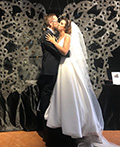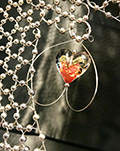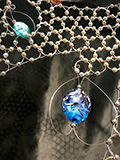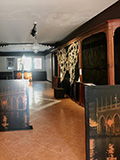Store
Opening hours:Until December 3rd 2020
Saturday: 10 - 18
Address:
Dorsoduro 872, 30123 Venezia (VE)
Telephone:
041 52 32 939
E-mail:
edmondavenise@yahoo.com
Facebook:
Edmond à Venise. Palazzo Contarini Polignac concept store
Instagram:
edmondavenise
Edmond à Venise
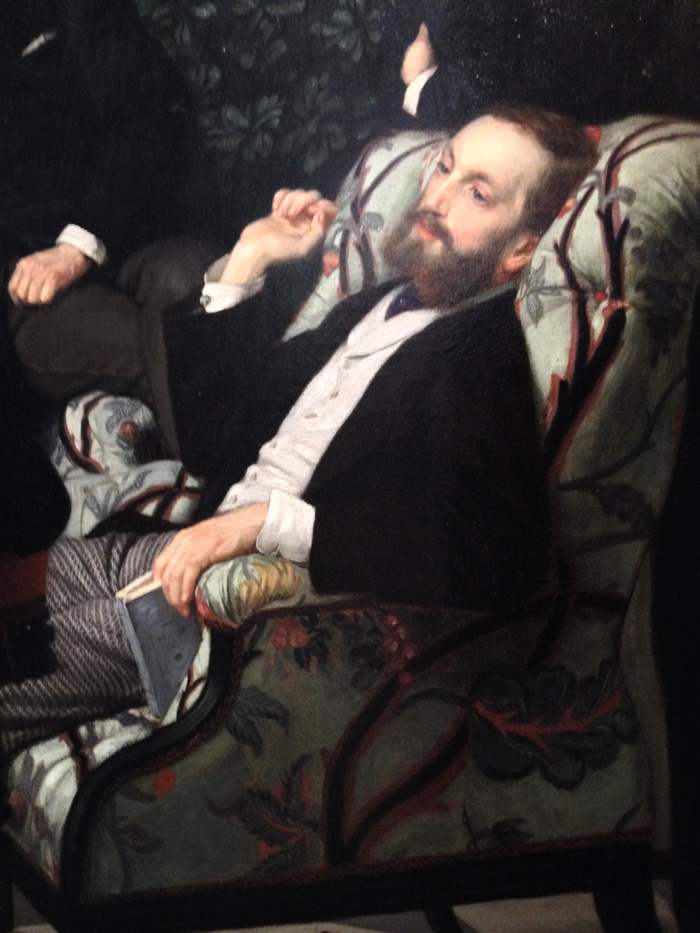
Prince Edmond de Polignac
Books
We have a selection of the beautiful books by Elzeviro Editions: a series of unusual guides of Venice, following France Thierard in her favourite spots and trips around the city’s cafes and artisanal shops; or being guided by Alberto Toso Fei in his tours of mysteries on the traces of Venetian ghosts from ancient history; or learning the significance of the city’s symbols and traditions.
There also are books written by Venetians on some specific aspect: as the chef Enrica Rocca’s volumes where she combines the recipes of Venetian cuisine with another Venice rooted tradition: Murano glass tableware.
Francesco Mediterranean voyage is the account by Francesco Da Mosto, renown in the UK for his BBC Francesc’s Venice series, on his sailing boat around the Mediterranean.
Andrea di Robilant is another illustrious writer present on our bookshelves with his latest “Autumn in Venice”, the story of Hemingway’s last muse, the young Venetian countess that inspired his Across the river and into the trees.
And of course, we could not miss books on Edmond de Polignac, our inspiration, and his beloved spouse Winnaretta Singer patron of the arts, and of music especially. American author Sylvia Kahan, Professor in Music at the College of Staten Island, developed the research originally for her thesis, in two detailed biographies of this couple.
Music
Decorative Objects
Aristide Najean
All-round artist able to combine contemporary design with functionality and traditional glass making techniques.
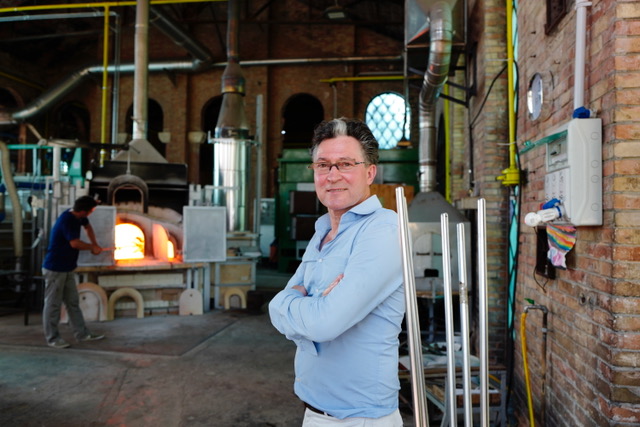
Aristide Najean
Story: Aristide Najean’s glassworks, are physically realized in the “Cattedrale”, the cathedral as he calls it: a hystoric glass factory on the island of Murano, in the Venetian lagoon, formerly of the great maestro vetraio Alfredo Barbini. High light blue windowpanes on all sides of the building filter natural daylight all day long, the pavement is used as a sketch surface, tables and trolleys are full of single pieces of much larger sculptures and totems, and all over chandelier lamps of all sizes are hanging from the ceiling. After working with various furnaces on the island, he moved there in 2015, deciding that he would devote himself to glass design, and made it a “Najean pieces only” furnace. He is a glass artist in the way that he actually introduced new techniques for glassmaking, its decoration and colours. To the recipe’s main ingredients, sand and soda, minerals and chemical components are added: every maestro has a distinguishing touch and secrets, and Najean has his own. Technicalities aside, his works from the inspirational front come from a painter’s imagination, a contemporary artist that can infuse his up-to-date style with tradition, that can find a balanced way to compose pieces by putting side by side unexpectedly matching materials: one for all the combination of Murano glass with French crystal.
Artist: born in Paris, Najean had the opportunity to discover in childhood different cultural universes: Spain, Greece, Italy… all rich of influences for the creative mind of an experimental artist. Starting as a painter, he tried all the expressive forms derived from drawing, painting and sculpture and lay his interest on glass in 1986, learning the centuries old techniques for its making from the maestro Mario Badioli. Now affirmed and internationally acclaimed glass artist, Najean keeps experimenting and collaborating with other creative professionals, from chefs to architects as Alain Ducasse and Philippe Starck just to name the most outstanding. Chandelier lamps of his making decorate the most charming restaurants and hotels as Caffè Quadri, Fondaco dei Tedeschi, Palazzina G in Venice, The Dorchester in London, the Plaza Athénée and Royal Monceau in Paris, the Hotel Louis XV in Monaco.
Projects: always active and experimenting challenging new ways of applying glass art to any kind of environment, the very latest work is “classified” for now. We will witness the result of one of the projects that were boiling in the past month, very soon during The Venice Glass Week. Set in the store of Palazzo Contarini Polignac, a collaboration with “the cooking countess” Enrica Rocca, will see the elegant chef’s typical Venetian cicchetti, served on Najean plates and cups, bringing Murano glass tableware back to its original gastronomic use.
Prices: range from 300 EU to 30000 EU (for our pieces)
Shops: Gallery in Murano- Palazzetto, F.ta Venier 6, 30141 Murano Venezia; Fondaco dei Tedeschi, Rialto
Why buy in Edmond à Venise: because his pieces are unique as a start, he gives different ones to the spaces that showcase his work, and some of the ones we have were specifically made for us and cannot be found elsewhere. The store is like an open gallery of his work and will host a dedicated show during The Venice Glass Week 2018 festival, in collaboration with gourmand cooking teacher Enrica Rocca that will fill his exclusive design plates with her exclusive dishes.
Info:
| Interview | |
| aristidenajean.ch | |
| www.venetosecrets.com/design/aristide-najean-artista-del-vetro | |
| www.meemurano.com/it/designer/aristide_najean |
Maria Grazia Rosin
Trained painter, fund in glass the ideal material to translate in 3D her visionary projects
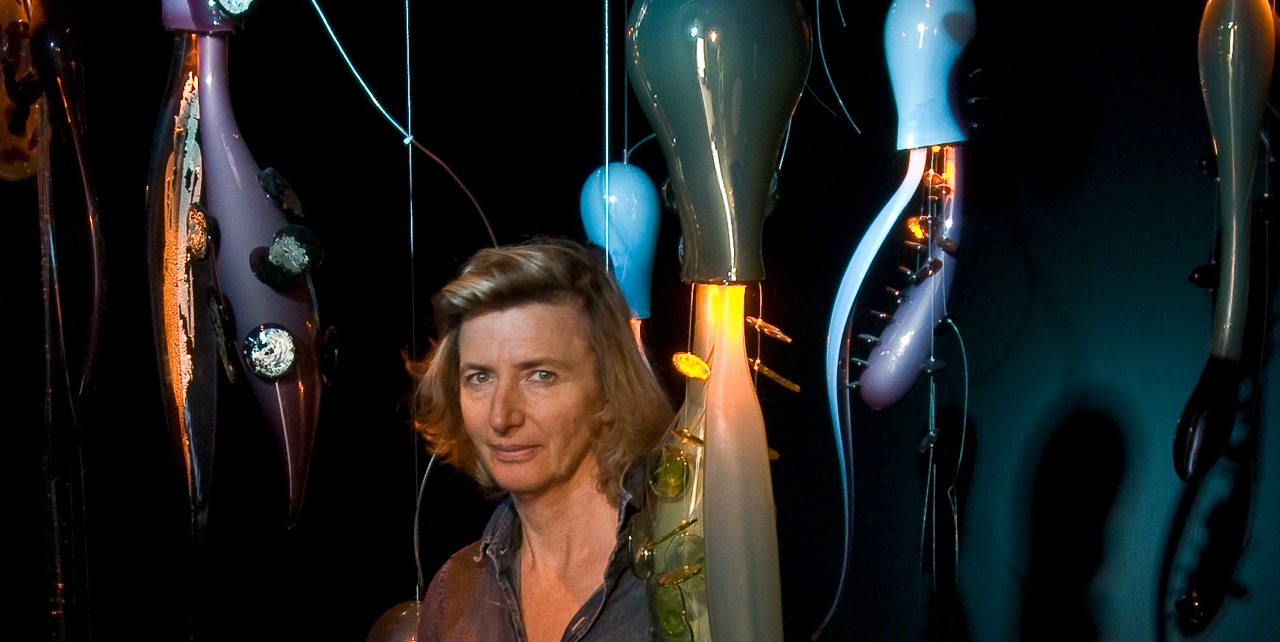
Maria Grazia Rosin
Story: At the beginning of the Nineties, she began experimenting with glass, conceiving bizarre objects and sculptures for a project of the Fondazione Bevilacqua La Masa. Freshly graduated in Painting at that time, she hasn’t stop creating bizarre objects in glass. Her works are stories represented in glass; she finds inspiration in the natural and animal world and follows her fantasy images for projects that are then hand made by some of the finest glassworkers of Murano. Irony and lively colours are part of her art, which makes traditional Murano glass reach for sci-fi and pop art universes. Her pieces range from original and fine table wear, from small size glasses to majestic colourful cups and vases, to imaginative sculptures, to futuristic alien looking lamps with glass and optical fiber tentacles…
Artist: Maria Grazia Rosin was born in Cortina d’Ampezzo, the most famous mountain location of Italy. As a young art student she moved to Venice to continue her studies with Emilio Vedova, teaching then at the Fine Arts Academy where she graduated in Painting. Soon after, she made the first experiments with glass thanks to the Fondazione Bevilacqua La Masa Glass Project in 1992, and was invited the year after to participate at the 45th Venice Biennale curated by Achille Bonito Oliva.
and the following year she was invited to participate in the Deterritoriale exhibition at the 45th Venice Biennale curated by Achille Bonito Oliva. Her works keep being exhibited either permanently or in temporary solo shows in Venice, and beyond.
Projects: her creations are present in important collections in Venice and around the world: Museo del Vetro, in Murano, Kunst Museum in Dusseldorf, Carnegie Museum of Arts in Pittsburgh and the Corning Museum of Glass in New York.
Price: from 85 EU to 6000 EU
Shops: Nason Moretti in Murano for her designs for them
Why buy her pieces in Edmond à Venise: because this shop is the natural prosecution of the gallery of Palazzo Contarini Polignac where we met her the first time and took an immediate liking for her and her work and gladly hosted her exhibition in June 2018, “d’arZento landscape”.
Info: basically search results of her give back a long list of sites that contain beautiful reviews of her work. Just a few addresses:
Il giardino di Marta
Marta's paper flowers are nature’s vivid colours seen through her eyes and personalised by her hands.
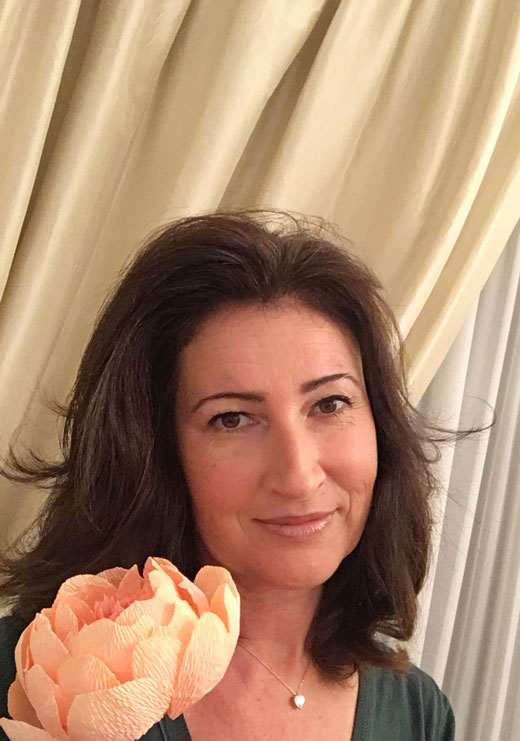
Marta Nardi
Story: A year ago, in 2017, in the occasion of the window dressing for her husband’s jewellery shop, she was inspired by a beautiful handmade paper flower and tried to reproduce it. The result was as beautiful. However, she did not like the idea of having duplicated some else’s work, so she made her own interpretation of a flower in crepe paper. She liked it immediately, and as immediately understood that it was the right path to follow. Her paper bouquets achieve the balanced combination of realistic reproduction and artificial creation: crepe paper has the malleability to make the texture of the flowers realistic, but the flashing colours and the stylisation have the artist touch. They are not reproduction of real flowers, they all are outcomes of her own personal interpretation of flowers.
Artist: Marta Tullio, came to Venice for love, married to a Venetian gentleman who is at the helm of Gioielleria Nardi in Piazza San Marco. As he introduced her to the city, she discovered in it, aspects and peculiarities that had much in common with her own self and with what she found appealing: the sense of time, the rhythm of the city, the variability of the light, the peacefulness given by water. Venetian shades of blues, greens, greys, sunset pinks and their transformation according to the different moment of the season and of the day, captured her above all. As a gemmologist, colour is the major inspiring element for her, not only for what concerns her expertise in precious stones, but in life for everything around her from nature to daily objects. This is absolutely clear in the chromatic choices for her paper bouquets.
Prices: € 250 for the bouquets, €350 for the bigger “flower vases”
Shops: No formal shops, but her creations were successfully sold at the charity event for the Weekend Biennale, organized by the Italian Order of Malta.
Why buy in Edmond à Venise: because we are the only actual shop with her creations known of
Info:
| Links to see more of her work | |
| http://weekendbiennale.com/bouquet | |
| Instagram account: ilgiardinodimarta |
How did you start making paper flowers? What made you choose this path?
For the need of doing something creative, to infuse to others my aesthetic sense that arises primarily from colour. I fell in love with this material, crepe paper, because of its versatility: it is extremely easy to model, it is resistant and of course the colours attracted me the most. Colour is the main source of inspiration for me, in anything around me: from nature to daily objects objects. By experimenting, different types of flowers came out: from the more realistic ones to the stylized. All of them however, are not the mere reproduction of the exact colours and forms you can find in nature, that is not of interest to me. only personal interpretations of flowers. Some have shades and shapes that do not exist in nature, but even the ones that are very close to real flowers are never a plain proof of concept. Each one is my own personal interpretation of a flower.
Where does your sense for colour originate from?
From my background: I am a gemmologist, and colour is of primary importance as source of inspiration. I worked for a famous Italian brand of luxury jewelry for many years, as a gemmologist, I worked in sales for a while too, but still as an expert in gems. After I left the job, to have time to dedicate to my family, I started helping my husband who is also in the field of luxury jewelry. The work I do for him only revolves around my expertise, in choosing gems.
Has your family something to do with you being in Venice?
Absolutely! I arrived in Venice for love. I am originally from Riccione and moved to Venice to be with my husband. I love it from the first moment: he is Venetian and the way he introduced me to the city made me fall in love with its artistic side at once: he showed me around and made me come to know it deeply. This has been essential for my understanding of this splendid city.
Is this still your feeling for this city?
Yes, I feel it very close to me, in an empathic way. Its rhythms, its movements are similar to my own, the presence of water soothes me and gives me a good feeling about living here. Then there are its cultural and artistic qualities of course, but we all know that, it is probably the most obvious thing to say about Venice.
Is it an inspiration for you?
It is indeed, from the point of view of colour especially. The colours in Venice are continuously varying according to the season, and every single tone can vary more times a day according to the hour of the day. A little undertone can change everything. This is a feature that I take into account in my creations: the flowers’ colour, so vivid and flashing in the beginning, becomes of another shade under a different light, and it smoothens and transforms as time goes by. The fact that their colour softens and varies makes them almost “alive”. I find it beautiful that, once found a place for them in one’s home, they react to the light that reaches them and change tone accordingly.
What was the life changing moment that made you take this path?
A year ago, dressing the vitrine of my husband’s jewelry shop, I tried to reproduce a paper flower that I liked, made by an Italian gentleman.
The outcome was perfect, but it felt “fake”: I had just reproduced someone else’s work, and it didn’t feel right to put it in a vitrine where people would have seen it and maybe even recognized the inspiration. There I decided I would do something different, my touch and my inspiration. And I like immediately the flower I created that way, and told myself “this is it”.
Jewellery
France Thierard
Jewel designer, writer and traveller that made of Venice the pivotal point of her life and work
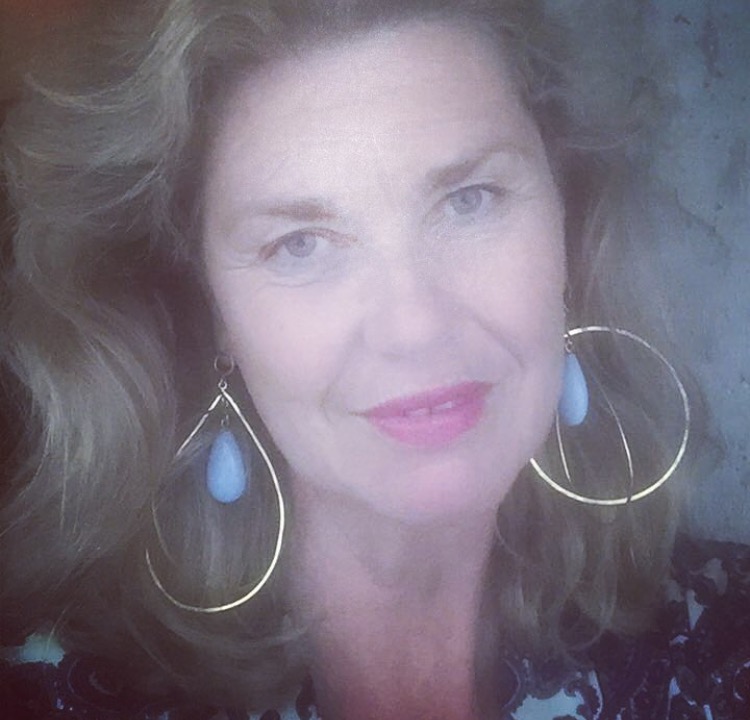
France Thierard
Story: writer before jewel designer, her bijoux of the Venice collection are a derivation of her guidebook “Venice as I love it” (Elzeviro, 2017). They match with four traveller types that she ideally takes by hand around the city, following paths and tours according to different inclinations and interests: that for art, physical activity, festivals, historic libraries, churches. The Elegant will prefer charming views from unique hotel terraces, The Erudite to discover hidden libraries, The Dreamer will fancy a walk to Punta della Dogana, and The Adventurous a boat ride where she can row herself. In parallel, these approaches to life and styl, are dedicated specific charms: quadrilobe openwork bracelets for The Elegant, tiny ebony forcole pendants for The Adventurous, spiral earrings recalling the venetian chuches’ volute for The Erudite, and fine, airy venetian chain to adorn The Dreamer. For France Thierard, Venice became the pivotal point for her inspiration and creations: all her other bijoux, inspired by other places and new travels, are still made in Venetian laboratories and come out of the hands of Venetian artisans.
Artist: before devoting herself to jewellery design and to Venice, she was working in Paris for the Comedie Française. It all started with a trip that changed her life and career. She was doing on-field research for her guidebook “Venice as I love it” (Elzeviro, 2017), and she run into the shopping trap of traditional artisanry: bewitched by the colours and variety of Venetian glass beads she bought far too many and went back home in Paris with an unreasonable overload of them. Her very first sautoir, composed for herself, to put to good use this excessive amount of typical Murano charms, was a success. As friends and colleagues began asking her to make others for them, these first creations were worn at a social soiree for the Comedie Française where they were praised and admired and gained a report in the winter edition of Elle of that year. She then decided to become a jewellery designer, added Gemmology to her skills (which feature a with an Art history and Culture Management education background), and now lives in Venice, city that keeps inspiring her.
Price: wholesale on her website bijouxfrancethierard.blogspot.com
Shops: Gab & Jo, 28 rue Jacob, 75006 Paris; online: www.lessisrare.com
Why buy in Edmond à Venise: because we are the few who showcase her pieces, the only ones in Venice.
Info:
| France Thierard interview | |
| www.lessisrare.com | |
| http://bijouxfrancethierard.blogspot.com |
Muriel Balensi
How was your first contact with Venice?The first time was almost ten years ago and I came here for holiday. I worked in Paris at that time, and I loved it. I heard many people complain about Paris and how life is difficult there. I think it is wonderful, and never I thought I would leave it.
What made you do it?
During that first trip to Venice I discovered glass, and glass is what made me move. I had the chance to touch the matter, and I had the feeling that that was the artistic medium I always had been looking for. So, I followed my instinct.
You devoted your life to glass, you moved to Venice and have a studio in the island of Murano. Is glass the only material of your creations?
I would have to say iron. I do not work iron with my own handiwork, but I work it with my mind. I use it in sculptures and installations that I disassemble, cut, reassemble and rethink: in this sense I work it with my mind. You need to know what a certain material allows you to do with it to free your creativity. This is the reason why I think that one should learn the basics of an art in a scholarly and academic way in the beginning, so that one can free oneself from it afterwards. First it is necessary to learn the technique, the development of creativity will follow.
Have you felt recognised by tradition and by the other colleagues and glass professionals in Murano?
Glass professionals working in Murano said I have invented a new concept for glass beads, they have described my work as a new technique never seen before in Murano.
My work has been exposed at the Museo del Vetro twice. The first time, for “Murano oggi”, there were only 10 of us in the beads business, and I was the only foreigner among those who work the material. The second time I participated with an installation for the exhibition “Il mondo in una perla”. Over the years, I was given the opportunity to show my work at Adriano Berengo, Teatro La Fenice, and the Thetis centre in the Arsenale.
I like that when women wear my jewellery people recognise “Muriel’s beads” at first sight.
What makes yours unique compared to any other glass bead?
We are talking of a bead that can have up to seven different layers of colour pigments and crystal, so that it looks like a small universe trapped in glass. The process takes over an hour.
This second layer is like an immersion, I call it “messa in abisso” which literally means “to immerse in the abyss”. I like the idea of following the pearl being captured by a void and fall in a mini world of evasion and poetry: this at least is what I see in each bead.
This style defines my work and makes it recognisable. It is a personal expression: my beads are the mean to express my poetry. Even if I teach someone else the technique for doing it, the outcome will never be the same.
Why glass? Any other passion?
In chronological order philosophy is my first passion. It is not a “dead thought” as people think, it is more practical than that and it is what helps us living.
There is a say in China for jade engravers: they say that it is jade that chooses its workers. It is the same for glass. It is a material of absolute sensuality and very difficult to work with. Working with glass is a dialogue with elements, among which fire is the most powerful, and we have to respect it.
Where does your inspiration comes from?
Nature and its phenomena as you can see, art (all art that has “written history” has something to say to me) and music (I even made some “J. S. Bach” beads).
Inspiration is of those who know their past: looking at glass making heritage, continuing tradition without copying, and adding “la touche”.
Any projects boiling for the future?
I’d rather not spoil it. I am not superstitious, but I believe that a project is like a treasure: if you open the box for a sneak peek, it will release some of its energy and loose its power. Talking about it is like revealing a bit of it, so I prefer to keep the box closed until it is ready for public exposure.
Art
Justine Bradley
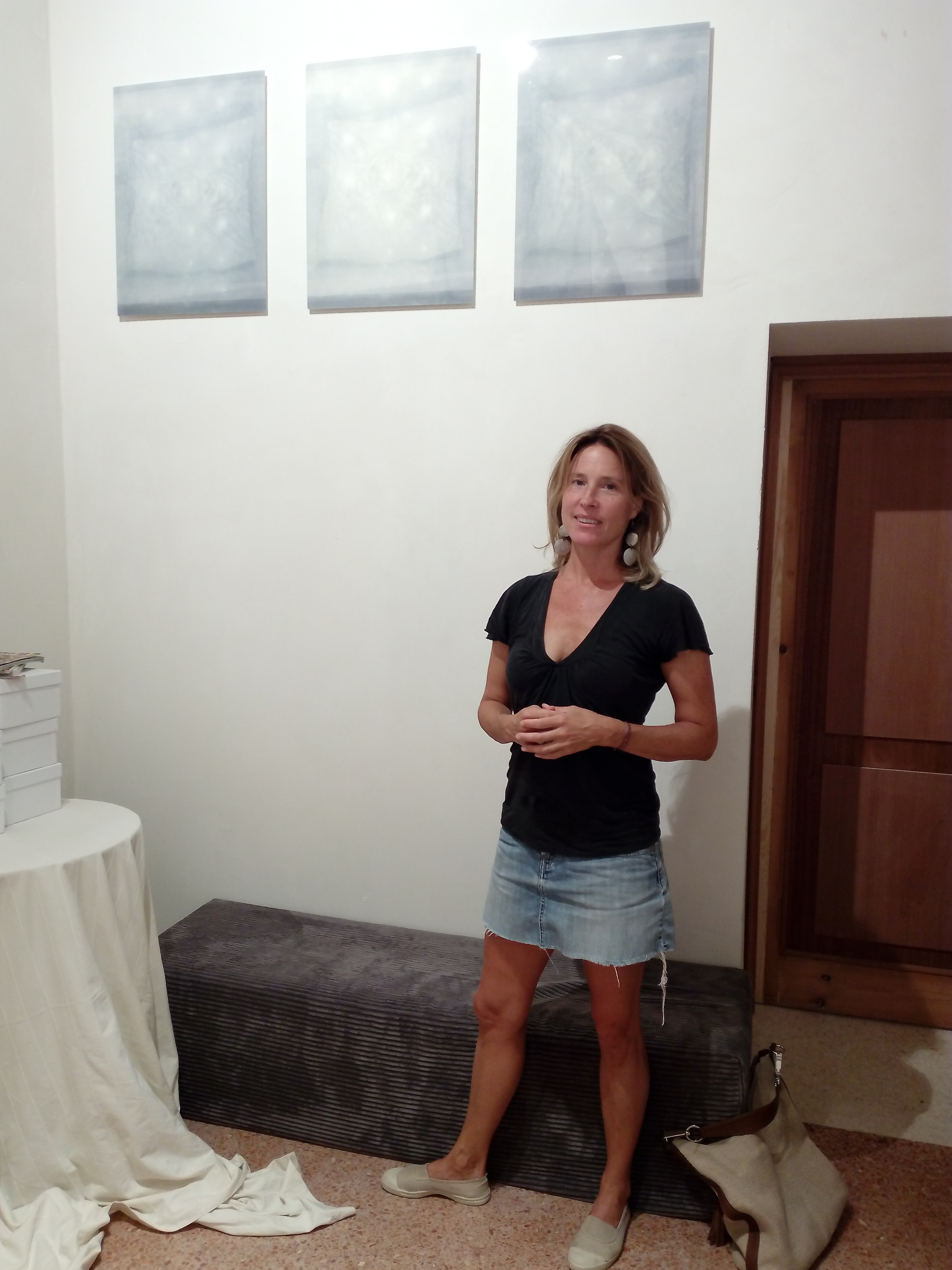
Justine Bradley
I always painted, since I was kid. I used to go to summer schools as a teenager, and before that participate in activities in community art centres. When I went to the Rhode Island School of Design, there I really started thinking about art as a possibility for something that I wanted to do in the future. I didn’t do that right away, I went to college instead. But then I managed to have experiences that pushed me in the art direction. The Studio school in New York, where they taught this technique of “experiential drawing”: you mark the paper in every point that your eye touches, so it feels like you are marking the paper all at once. That was very inspiring to me and I kept doing it for a while. Then I went follow different studies and that is what brought me to here. I got myself a studio and started producing my own things, selling them when possible, and I worked as an illustrator in Florence, and did all sort of jobs that could keep me in the field of what I wanted to do.
Was it art that then brought you to Venice?
I am happy of being here, but it wasn’t art that bought me here. I am bond to Venice because of family. Still, it is a city that has influence on my art.
How does Venice influence your art?
Unconsciously we pick up from the environment we are surround by and we re-interpret it within our own expression, artistic expressions. And one of these which is seen throughout most of my art is “fluidity”. And layers; that can be considered as historical layers, very fitting with this city, where you see layers in the buildings, in the way it was built... But it also fits with the sense of being surrounded by something that is fluid, like a fluid entity that connects all of us in one, as if it were a “being”.
Could you explain the source of inspiration of your art now?
I was a bit concerned about how we could heal from the damages of how we treat each other and maybe the Earth in general, and I started studying a therapy called biodynamic cranio-sacral therapy. It is all based on a fluid energy between us, that connects people with one another, and energy at a cosmic level that connects all of us and us to the world. My works have always been “watery”, I already had this in my paintings even before studying cranio-sacral therapy, it was like an “innate vision”. When I started studying this, I realised it was exactly what I was already thinking about, and what I was painting about.
Do you paint exclusively?
Mostly I do oil paintings, but also large-scale prints, I do a lot of drawing too and most of my prints were based on very large drawings, and I do some acrylic as well. I also work with plexiglass: computer printing on plexiglass, that comes from paintings. As the plexiglass Triptych: this is a very personal work where there are layers over layers of my personal history, using my personal belongings, a picture, a pillow… in my work, where there are recognisable elements, it is because I was physically looking at them, I was not imagining it. When it is abstract, it is because it comes from a vision within.
My paintings are like haiku: there is not really a story, there is a language but not necessarily linear with a beginning and an end. It is all at once, as you would experience if you were there living it. This is how I like to think of it: we are in the midst of it, experiencing it all at once. Only afterwards you can find a narrative.
Projects?
Finishing my cranio-sacral therapy course. And after that I plan to do another show, based on that; dedicated to the ways we can find "connection" in this world that goes beyond the verbal and the symbolic. The basic idea being that if we can learn to deepen our own experience of "self" as part of a larger whole of shared consciousness, that in itself creates the possibility of deeper connection through resonance and a more careful way of being in relationship with each other and our environment.
Katia Margolis

Katia Margolis
I write and translate, and in my art I always work on the frontier of language and image. I have formal qualifications in linguistics, but I have always painted. As a young woman, I read a great deal of literature–and that was good, and not merely in academic terms: I beieve that if you don’t gain the cultural high ground when you're young, you never will. When I was 19 I decided to devote myself to art. At that time, to me, this meant drawing 24 hours a day.
What brought you to Venice?
A trip, as a teenager. It was one of my first trips abroad from Russia, and I had planned to see as much of Italy as I could, although Venice didn't figure in my initial plans. I went to Padua instead, because I wanted to see Giotto's work there, which I loved. I refused to go to Venice because I had the idea that it was an overrated and all too obvious destination. I finally went, largely because my peer group insisted I should not miss it on any account. When I arrived, and immersed myself in the landscape, I had the feeling of having been there before: I “recognised" the landscape. It resonated with my childhood memories of our home in the Russian countryside. We lived in Pasternak’s house, the one in Doctor Zhivago. That country house landscape is inside me: I know it and feel an immediate sense of “home” when I look at it. When I first came to Venice, the same thing happened, I had the same feeling, that of “knowing” the place.
Is that what made you move to Venice?
It was not that linear. Despite my initial love for Venice, I only returned years after that first trip, for work, a three-month project. I've ended up staying here for 14 years.
In which way does the city influence your work?
It is the subject of many of my works. Though it has been many years since I moved here, I can still be forcefully struck by new sensations. It is like living with someone: with time you lose some of the romance, but gain a deeper intimacy.
Other sources of inspiration?
Poetry and music of course, but I can find inspiration even when I’m peeling potatoes for soup!
What materials and techniques do you like using in your work?
I like to recycle materials, such as old printing blocks or discarded window shutters. I like watercolours and ink because they allow dialogue: they interact with the surface in a way that you cannot fully control. I don’t always want to be the one that does all the talking. When I use these materials to create my vision, I want to hear what the medium has to say, and let the materials talk too.
Marie Hugo
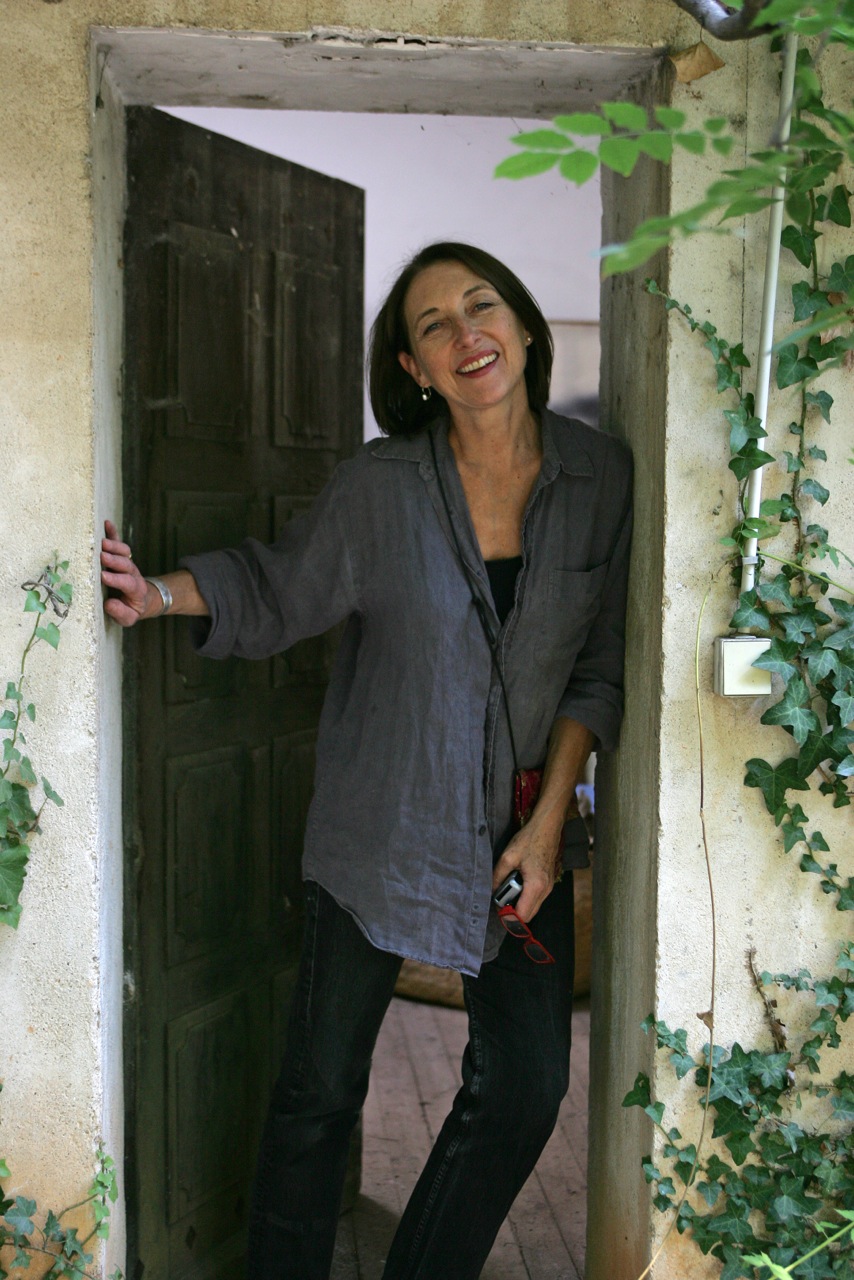
Marie Hugo
I come from a family of artists for many generations. My father was a painter, Jean Hugo who belonged to the well known artist movement in Paris between the two wars referred to as "Les années folles". As a child I always went to my father's studio and then later I worked with him and at the same time studied engraving and lithography at the Beaux Art in Montpellier (France). So my training led me to the world of Ink, Paper, and Brushes. With the years I moved on to 3 diminutional work and even made a short film. I like to go from one media to another one, following the progress and evolution of my subject matter.
Where does your inspiration come from?
My inspiration comes from nature and the force of the elements. I like to associate my vision with this very moving text from Novalis, 1798.
"Men travel by many different paths. Who ever tracks and compares their ways will see wonderful figures arising; figures that seem to belong to the great manuscript of design which we descry everywhere, on wings of birds, on the shell of eggs, in clouds, in snow, in crystals, in rocks formations, in frozen water, in plants, in beasts, in men, in the light of day and in the singular coincidences of chance…. "
Which are the materials and techniques you use?
I work with Indian ink and color pigments. Water is very important as I use it to transport my brush strokes. I play with either the fusion of ink and water or with the incompatibility of these two liquids. For the Medusa sculpture I used metal mesh.
What links you to Venice?
My involvement with Venice, and the Palazzo Polignac specifically, dates back to my father's link as an artist friend of the Prince de Polignac. My personal link with the city is my involvement with water and recently with glass, as I present my mesh sculpture "Medusa" in a glass globe.
Peter Seidel
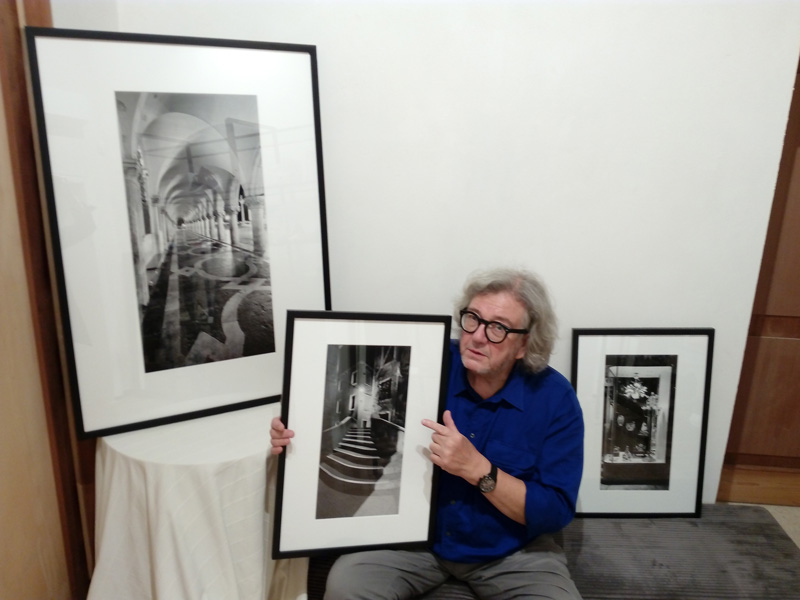
Peter Seidel
| http://peterseidel.de |
I received my first camera from my father when I was 14 years old, a Kodak Instamatic 50, with cassettes. Looking backwards I feel I loved it at first sight. Photography became one of my hobbies and I kept cultivating it despite the other activities that occupied me. I started being interested in printing thanks to one of my father’s friend, who own a print shop and allowed me to go there and watch them at work and helping with the minor tasks.
The first photograph series with a professional approach I did was in a sewage plant of the 19th. century in Frankfurt: it was a huge space, 80x80 meters, industrial architecure with bassins and vaults of brick and tiles, cast iron, 100 year old machines, still in function - and stinking like hell. The mixture of light and shadow, of the above and below, perfectly constructed but with thousands of spiders, the cloaka maxima, alike Dante, paradise and hell at the same time. It absolutely fascinated me; I still had not much training at that time, no idea of framing, of the light or exposure, so I started with the wrong film not able to capture the enormous contrasts, slides of 35mm were to small, so I bought a 6x6 Hasselblad for the details, my aims were high, then I bought a large format camera system 5x7 inch, without any experience to use these tools. After months of trials in my “cathedral“ the result were on a more satisfying level. At the same time I got hold of the catalogue of american painter Edward Hopper, of his first show in Germany, written by Gail Levin. Nearly 30 years later she wrote the essy for one of my catalogues. Together with the works of photographer Joel Meyerowitz these were initial impulses for me to look at art and architecture.
The cloaka series was the base for my first book, a documentation of the architecture of historic factories and technical monuments in my region Hessen: Untill then only few ever thought about those buildings as beautiful, or of historical and aesthetical interest.
What do you take inspiration from now?
Since the early days it was very important for me to cultivate my creativity, in the sense of taking serious any idea I had. First I urged me doing a photo and then to decide if it was good also morally integrated, not the other way with scissors in my head.
I am only interested in practicing photography when I find a theme or an aspect which was not elaborated by somebody else before. The inspiration comes automatically, I only have always to be alert, nearly every project I did realize was developped of an already realized project, so there is enough material in the sense of ideas, I only have to pick them up, being lucky if I do not get new inspirations because my lifetime will be too short to realize all. And they are a weight, my ideas for photos are little monkeys who are jumping and dancing on my shoulders until each of them is done on film.
In my works I tried not to be bound to the same view: when I first worked on the industrial architecture throughout Hessen region, I was interested in the architecture of the buildings; for my next project, the “Underworld” of Germany I started from the same sewage plant of my very first shootings, but now looking in a different way: the not the industrial, but the aspect of the underground. In the same way, the underground level made me discover the universe of Jewish ritual baths „Entirely pure - Ganz rein“, that became my following project.
What is your link to Venice?
In 1993 I fell in love with a woman from the Venetian mainland, an Italian teacher. I purposed her to make our own language school in Germany. We did and developed for our students an exchange programme with 20 schools allover, in Venice with Istituto Venezia; I used to go with the students, and had the chance to visit Venice about once every three months. I started getting to know it, walk around and look for something to photograph that wouldn’t be completely obvious or a postcard cliché. Nearly everything I saw had already been done innumerable times by innumerable photographers. Walking around the city during the day I started to look through all the tourists to find a way coming closer to Venice and what it is all about in history, architecture, glory, culture, success, solitude, fragility.
Late at night it was all empty, no dominant colours of sky, the water, shops, no harsh sunlight with harsh shadows, no movement, remaining were intimate spaces inviting me to come in, all sheltered by the black of the night.
I looked at it from down up, and it seemed to me that the city builds up in front of you: from the water, to the wooden pillars, from the fondamenta, up to the walls, and up to the windows and the sky, so I finally chose the vertical format for my Venice series. I stick to traditional photography on film, and to one view one shot.
On location I am using only photohead. It takes the long time it needs, a top quality film, the perfect exposure, and then I wait, feeling happy and unified with the world, also meditating about where I temporarily settled myself.
Future projects?
Nearly ready to be shown is another series, exploring even deeper levels. But first of all I stick to this Venice project to get it even more complete, to something which lasts. There are still so many aspects which not have been touched by my camera. The show in Palazzo Gallery evoked many positive and stimulating reactions, so I want to develop it, also a printed publication, as my statement, as manifesto for a more profound understanding and a higher appreciation of this unique place on earth.
The photographs of Venice are my personal offer, predefined throughout object, position, angle, what and how is focused, not done to just be consumed. Their task is calling the viewer to participate, to bring her or his own feelings, ideas, memories, reflections.
„Venezia black and light - i muri parla“ is like listening to the radio. A space will open, linked with the invitation to imagine.
LEONARDO ONETTI MUDA
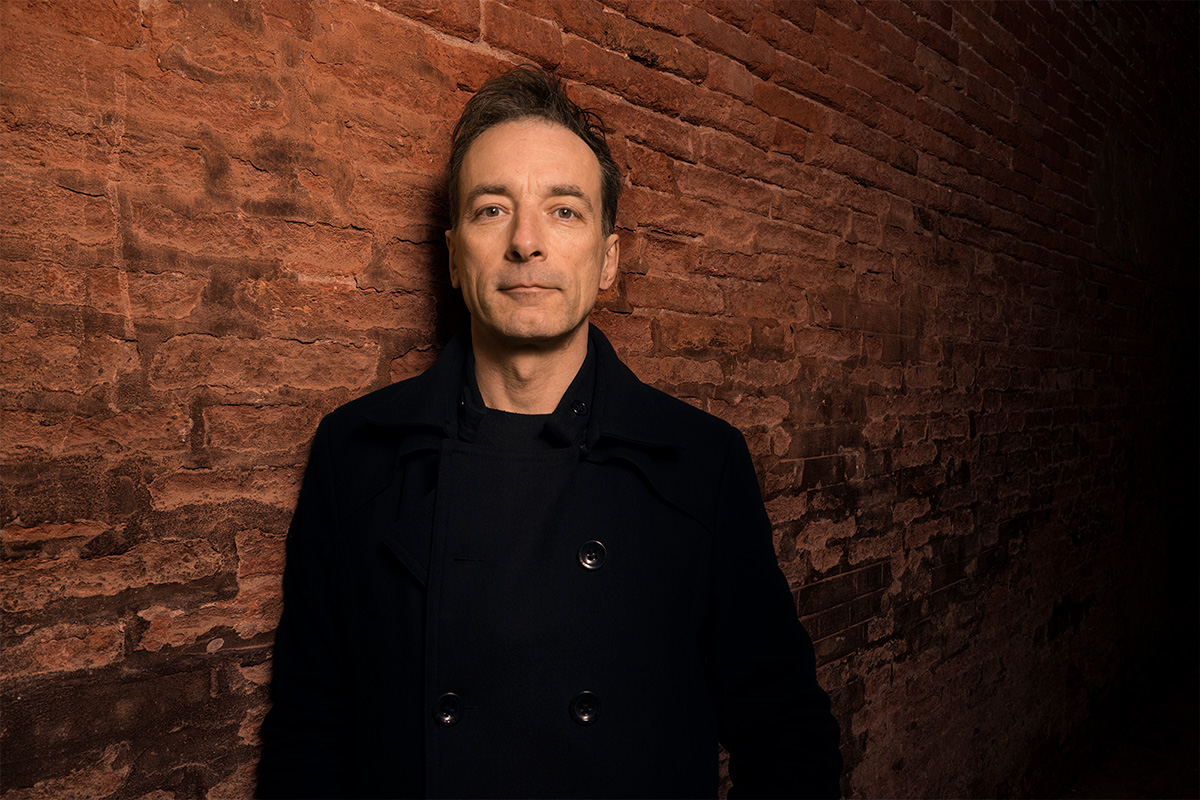
Leonardo Onetti Muda
My interest in photography arouse during high school. I attended “Liceo classico”, how we call the Greek and Latin language and literature curriculum of studies in Italy. It was a very strict discipline that we were demanded, and the subjects and approach to them was totally focused on the past. With a few schoolmates and friends, we started finding “nearer” interests: music, all music, jazz, punk, funk, hard rock, a little bit of pop, classical and dodecaphonic music; cinema, hanging out at various film forums; and photography, which intrigued me a great deal, to the point that, with one of my friends, we decided to create our own (almost) dark room in a garage corner. We made our first prints there and, next glorious step, began developing our rolls of film.
What was the step for you to become a professional?
At 23 years old, after compulsory military service that took two years between the time actually spent in the army and the year of waiting. Finally, I could dedicate myself to photography entirely, and I enrolled in the IED, the European institute of Design, in Milan. At that time, it mostly focused on advertisement: times when, freshly graduated, a photographer walked straight from school to a job. The air was changing already, and the Director, who then was Edward Rozzo, had foreseen it and was making radical modifications to the curriculum of his students by introducing the Rhode Island School of Design method, by Harry Callahan, which was all about personal research. That was the key turning point for me, not easy and not immediate.
While studying I used to do a lot of assistant jobs as freelance for fashion shootings, portraits, still life services on food and furniture, reportages… this is how I could collaborate with various national and international level professionals.
When did you find your own path?
I felt the need for it already while doing my first commissions for others.
Dividing yet again my time and work between Milano, Vicenza and Venice, I began my first personal project, thought of as a book from the start. “Trenta”, portraits of artists from Vicenza and their works. It involved me totally: concept, shooting, darkroom printing, editing, layout, even the delivery after it was ready! A point of pride in mentioning that I managed to cover the relevant expenses for print and pre-print without sponsors nor commissioners.
With that book and a portfolio based on friends’ portraits, I inaugurated my enduring tour of editors that triggered my coming collaborations with numerous magazines.
I still now have to cope with both dimensions, the commercial, and the artistic one. As a choice, I keep them separate, even by name: Muda, professional photographer who works for clients; Leonardo Onetti Muda, my full name, for my own personal works and projects.
Do you have a distinguishing technique, or one you prefer?
As a choice and personal temperament, I don’t have nor want to have a style, or a technique, or a specific subject identifying me.
Photography is “foto-grafia”, “writing with light”, and I am more and more opened to stretching that meaning. According to the kind of project, period, means available, I have employed microscope, view camera, going from film medium format, to my current habitual use of digital, full format or digital medium format. I still keep a medium format camera and a splendid folding camera “10x12”. I don’t exclude the possibility of a “return” to film for some works.
How about subjects: how do you choose them?
Even on this matter there is no constant choice. Sometimes the intuition is an image, taken instantaneously with the photography gear I have at hand in that moment. Most of the times though, after the initial observation, follows a going back to the spot with adequate instrumentation to let the original intuition emerge and become visible.
Some other times I have a theme, a series of subjects, and from a first generic pre-visualization I then move on to execution. There are many variables at this step, both of concept and practical.
“All’ombra dell’occhio”, for example. In that project I collected my own body specimens and photographed them through the eye of a microscope. I had a precise idea of what to do, and especially why, but I did not have the means for it. It took a team of professionals to do it and the result was absolutely unimaginable, because no one had photographed specimens that way before.
For single works the procedure is on occasion strenuous and tormented, for it means I have to render visible an insight coming from personal “ponderings” and inputs that are utterly distant from photography or art. These insights I have to condense into an image which, however it is realized, demands a reality behind it. Photography demands it, for Photography is not Painting nor Literature.
Where do you take inspiration from?
It is often born from details, usually neglected, ignored or even denied by most. I always take the move from reality, meaning my own presence in a determined space and time, and even if the image comes from within, pre-visualized, to make it real I resort to what I have with me, more or less.
True for my work and when analyzing others’, I don’t care for exoticism or in the need of going far away to tell something. Of course, photojournalism and reportages aside.
I do care a lot for composition but I try not to make it a matter of mere formalism; if there is balance then there is an element of deviance too. I like contrasts, that something that shakes and brakes symmetries, stereotypes, being didactic both in visual terms and of meaning. The challenge with these elements, and despite them, is always to end with overall harmony. I try to do it with my pictures, but all we need to do is to look around us: everything is a variety of apparently unconnected parts that actually coexist, mutually dependent, beyond categories.
What is your connection to Venice?
AAA… Amore Amici Arte. [It does not sound the same in English]. “Amore” because here, time ago, blossomed a relationship, “Amici” because this city has been the destination of numerous outings (or incursions) with friends, “Arte”, for the many exhibitions that still keep me coming here constantly.
Thanks to the chance offered by Giovanna Grossato, my curator and person whom I greatly esteem, I came back to Venice for a solo exhibition. Coming here again to show my work in the Magazzino Gallery of Palazzo Contarini Polignac, was a beautiful and happy opportunity.
Future projects?
I don’t like talking about things to come, partly because I am cautious but also because I imposed myself to only talk when things are done already or at a good point of development. In contrast with the habit of talking before having concrete results, mirrored by the late trend of always using the future tense…
However, I am sticking to the project “Faunus”, where I foresee a book but there are practical issues to be taken into account for it.
Other projects are underway, but I keep silent about those.
I go on a bit at a time, not proceeding in series, because the images I have in my mind and want to translate in actual pictures, I see as a single image. Techniques and subjects aside, it is my poetic that has to tie the images together.
Textile and Shoes
Romi Loch Davis
She pairs lavish fabrics with unique design for garments of uncomparable personality
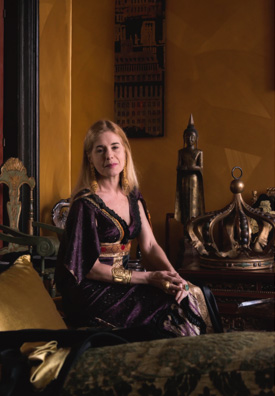
Romi Loch Davis
Story: natural born clothes designer, Romi Loch Davis started her career in the fashion world in Paris, the most alluring city for a young stylist. She opened a first store in the Marais, then enlarged the business with another one in Saint Germain des Pres. Her clothes and home couture are made from the finest fabrics and their quality and details are cared for obsessively. Working in a way that is quite unusual for the current conception of the fashion world, many of her pieces are one-offs or custom made. And especially, they are not predictable: expected materials gain personality and humble ones (as denim for instance) are ennobled. Moving to Venice three years ago, she established her atelier at her house, set in a beautiful and quite underrated part of Venice: as she is able to do for her coats in denim, she ennobled her house and made it a lavish work and living space reflecting her personality and taste to the millimetre.
Artist: Romi Loch Davis was born in South Africa, growing up in an environment free from mass culture conceptions on style and aesthetics. As she put it: “I am still moved by the same atmospheres as when I was a young girl growing up in South Africa where we did not have a culture of labels and aspirations to possess big names: one had to almost create one’s own canons of aesthetic or creative expression”. Studying in Paris, the unmissable choice as a city where a fashion designer would want to start her career, she settled her business and life there. Until, out of love for Italy and Venice on top of all, she moved to this mesmerizing city, a place that inspires and soothes her.
Projects: the most recent is the collaboration with Russian pianist Natalia Morozova: talented and beautiful, she is the official model for Romi Loch Davis fashion couture. Her interior couture creations in parallel caught the attention of Russian style magazine Salon, which dedicated her an eight pages report on her work, and photo shooting in her house.
Prices: set by stylist 400 EU to 3000 EU ca
Shops: home atelier only
Why buy in Edmond à Venise: quite simply because we are her only vitrine in the city and her support to the project of this store was from the very beginning. (A visit to her place to customise her pieces is advised in any case: too beautiful an experience to miss it).
Info:
| Romi Loch Davis interview | |
| www.romilochdavis.com |
Alexandra Voltan
She put her sense of taste and design skills in a shoe of two centuries tradition quality
Material: according to season; satin, suede, velvet, hand embroidered decorations in glass beads and pailletesStory: In the backstage of an Alexandra Voltan shoe is the family shoe business: the Voltan Company, established in 1898 by Luigi Voltan. As a clever and energetic young man he learnt new industrial technology in America, and bought this know-how back to his hometown Stra, in the Venetian mainland. He was the first in Italy to introduce lean production in footwear business, and his pioneer approach made the Voltan Company leader in the field of footwear and a significant social and economic resource for the area. Caring for the people who worked with him, Luigi Voltan viewed factory owners and workers as a big family working together for profit. This philanthropic attitude gained him his workers’ loyalty and the success of his project. The Alexandra Voltan collection succeeded in integrating couture design in top quality and comfortable footwear that the factory still produces to this day.
Artist: not a shoe designer by training but gifted with taste and with a clothing design career in her background, Alexandra Voltan is more of an artist on the inside. Inspired by Venice, city that she loves and feels close to her and rich of creative inputs, she made of St. Mark’s winged lion her collection’s logo.
Projects: in constant movement and research, has lately taken a professional interest in Fortuny fabrics and is developing a charms collection that integrates yet this other Venetian excellence with her touch.
Price: 235 EU to 275 EU (in line with their store in Stra)
Shops: Stra; online shop
Why buy in Edmond à Venise: for the environment, absolutely. Her couture shoes are now available in the city that inspired the whole collection, and Edmond à Venise is their only vitrine in the city. On the path that leads from the Accademia Galleries to the Guggenheim Collection and Punta della Dogana, an art related walk from tradition to innovation, very fitting with the Alexandra Voltan collection.
Info:
| Alexandra Voltan interview | |
| www.alexandravoltan.it |
Perfumes
Perfumes Cortese Venezia
As wonderful today as when first created in the 16th century, the Cortese perfumes reproduce the notes based on the manuals and formulas of that time.
Components: natural essences and extracts, all biologically tested
Story: They have been first developed by Venetians Giovanna and Loris de Strasser almost ten years ago, during a period of research on Venetian costume and tradition. The research work has been going on from 1997 to 2010, by studying the volumes in the best stocked libraries of the city: Biblioteca Marciana, Archivio di Stato and Fondazione Giorgio Cini.
There started a collection of recipes, references, handwritten and printed publications from the 1500s, concerning pharmaceutical herbal treatments of the time.
The idea was to reproduce the same note of the original fragrances, based on those recipes; after the creation of an original sample, the process of the making was entrusted to a professional perfume laboratory.
The main issue was adapting the ancient recipes for the taste of our modern noses: we are used to alcohol diluted fragrances, that are extremely light if compared to the taste and costumes of the Renaissance. In those days the most common format was solid perfume, essences were very concentrated, and were so strong that we would not be able to smell it close. Another peculiarity of those days was acqua nanfa (or lanfa): perfumed water, obtained by distillation from orange blossoms. Our ancestors used to sprinkle their bodies and clothing with it; and this for example was of inspiration for “Allegra”, the most citrusy of the Cortese fragrances.
So what has been done for the Cortese perfumes is to recover tradition, first of all the knowledge on the matter, and then recreate the same notes as the fragrances of 16th century Venice, but in the eau de perfum format we are accustomed to, and avoiding the use of animal components (such as the intestines of sperm whale for ambergris).
Venice in the 15th and 16th centuries: For centuries, Venice was at the heart of the perfume industry, at the crossroads between East and West: aromatic oils, essences and natural extracts reached the city from many exotic locations. The city was at its height as a maritime power, and perfume was an important status symbol. Perfumiers created unique, personal fragrances on commission from the noblemen and women of Venice and Europe.
Venice in the 16th century was also the birthplace of the modern publishing industry, and the perfume manuals were among the texts given to print: in 1555, Giovanventura Rosetti published “Notandissimi secreti dell’arte profumatoria” that contained over 300 formulas for cosmetic creams and powders, and perfumes.
The historical changes in Europe at the end of the 18th century that bought to the fall of the Republic of Venice (taken over by Napoleon then given up to the Hapsburgs and finally annexed to the Reign of Italy), and the parallel rise of France as the perfume capital of Europe, caused the Venetian perfume tradition to sink into oblivion. Until Giovanna de Strasser from the contemporary Venetian perfume house Cortese Venezia, together with her husband Loris, conducted meticulous research, rediscovering these fascinating perfumes, bringing them back to life and adapting them to how we live today.
Fragrances: Five total, all different from one another, all inspired or dedicated to a famous character of the Reinassance.
Ambra d’Isabella is based on the recipe of the perfume Isabella d’Este used to wear, Regina dei fiori is inspired by Caterina Cornaro and her jasmines in Asolo, where she recreated the mediterannean garden she had in Cyprus; Capitano is dedicated to Francesco Morosini and recalls tobacco and sandal scents, as if we were inside a ship coming back from the Orient; Allegra is a version of the perfumed waters popular in the 1500s, the “acqua lanfa”; and Nobilis is an elegant and unisex fragrance originally created for Giulia Gonzaga, based on mandarin, cedar, jasmine, amber and vetiver.
Price: 70 to 75 euros
Plus: the splendid iconography by Mariska Karto, chosen to match each fragrance.
| www.mariska-karto.com/portfolio_page/commission-cortese-venezia |
I FAMOSI OSPITI DEL PALAZZO / THE FAMOUS GUESTS OF THE PALAZZO
- 4 Ravel Jean Echenoz, 2006, Minuit.
- 2 Ravel Vladimir Jankélévitch et Alexandre Tharaud, , 2018, Points
- 1Ma vie Isadora Dunkan, 1999, Folio.
- 1Venise que j’aime Jean Cocteau, Michel Déon, André Fraigneau. Epuisé. D’occasion.
- 1 Mémoires Serge Diaghilev, 2008.Hermann.
- 1 Stravinsky Marcel Marnat, 1999. Seuil.
- 4 Albertine disparue ou la Fugitive, Marcel Proust. Folio.
- 4 Monet et Venise , Philippe Piguet, Herscher.
Décembre 2018
ISADORA DUNCAN
The Prince de Polignac at their first encounter, in her own words: "I met the Prince de Polignac, a fine musician of considerable talent; an exquisite, slight gentleman, who always wore a little black velvet cap, which framed his delicate, beautiful face. I donned my tunic and danced for him in his music-room, and he was enraptured. He hailed me as a vision and a dream for which he had long waited. My theory of the relation of movement to sounds interested him deeply, as did all my hopes and ideals for the renaissance of the dance as an Art. He played for me delightfully on a charming old harpsichord, which he loved and caressed with his finely tapering fingers. I felt at once for him the warmth of appreciation, and when he finally exclaimed, 'Quelle adorable enfant. Isadora, comme tu es adorable,' I replied shyly, 'Moi aussi, je vous adore. Je voudrais bien danser toujours pour vous, et composer des danses religieuses inspirés par votre belle musique.' And then we envisaged a collaboration. Alas, what a despairing waste there is on this earth. The hope of a collaboration, which would have been so precious to me, was soon afterwards cut short by his death."Isadora Duncan, Ma vie
The autobiography of the most inspiring dancer of the XX century. The self portrait of both the unconventional artist and the even more unconventional woman: a sincere account and passionate report of the various aspects of Isadora Duncan, of her professional challenges and achievements as well as her intellectual, moral and physical interests.
RAVEL
"The initial meeting between Winnaretta Singer, aka Princesse de Polignac, and Maurice Ravel was described as “an audacious feat of social climbing", during an evening in 1899. On that occasion the composer presented the Princess with his latest work, dedicated to her without having asked her permission to do so. The piece, Pavane pour une infant défunte, became a success before she could even object, and Ravel acquired a passionate admirer and an active supporter of his work throughout his career. The Pavane was even performed at Edmond de Polignac’s funeral in 1901.Vladimir Jankélévitch, Ravel
Vladimir Jankélévitch, French philosopher and renown musicologist, is the author of this essay on Ravel’s music and on his being a composer. Complementary to more romanticized and novelistic narratives on the artist, the volume by Jankélévitch is not an aseptic chronological account of Ravel’s life and works, but it is able to recreate the atmosphere of the period, to introduce the reader to a reflection on his art and on art in general.
Jean Echenoz, Ravel
The award-winning author chose Ravel as the main character for an epic-like novel, the first of a series of three, dedicated to some hotes celebres of the XX century.
Ravel is presented as an elegant, laconic, distant gentleman who lives in a small and far too complicated house surrounded by beautiful objects. The reader takes a liking in him from the very first page and follows him gladly in his cruise to the United States in 1927. It has been defined a "passionate and nonchalant" novel, with a style that fits Ravel’s character. A beautiful book, not only because Ravel was a great composer and fascinating personality, but also because Echenoz is a first quality writer.
STRAVINSKY
The collaboration between the Princesse de Polignac and Igor Stravinsky started in the early 1910s and lasted until her death in 1943. For many years he was considered to be ‘composer in residence’ at Winnaretta’s atelier and she was always much more generous with him than with any other artist she ever worked with. (https://parisianmusicsalon.wordpress.com/igor-stravinsky-and-the-salon-of-winnaretta-singer/).In Winnaretta’s own words: “From the first it seemed to me impossible not to recognize the importance of this new genius, and I still think he dominates all others who have appeared for more than a quarter of a century. No one has escaped his influence, though, as usual, his imitators are often most obnoxious.”
Stravinsky loved Venice and was among the regular guests at Palazzo Contarini-Polignac. He chose for himself to be buried in Venice, in the Russian corner of the city's cemetery, San Michele, next to his impresario and collaborator, Serge Diaghilev.
Marcel Marnat, Stravinsky
Stravinsky could not be absent from the catalogue of celebrated artists, composers especially, whose work and technique has been unraveled by French journalist and musicologist Marcel Marnat. In good company with researches on Ravel, Haydn, Vivaldi, Puccini, the volume on Stravinsky is a documented account in chronological order of the composer’s artistic and personal life. With a text book structure, pop up highlights on personalities and events, and rich in pictures, it is a detailed but not exclusively technical reading.
PROUST
Proust was introduced to the Prince and Princess de Polignac, by a common aristocratic friend: Count Robert de Montesquiou-Fezensac in 1894. Proust found himself a genuine admirer of the Prince’s talent as a composer and became a regular at their Paris salon.He managed to remain a friend with the couple even after the fracture of their friendship with the Count de Montesquiou and was visiting Venice with them the year they decided to buy the Palazzo Contarini dal Zaffo (now Polignac). The Polignacs’ salon became the salon, model and stereotype of the ones he described in his literary work. For its the environment, atmosphere, guests and level of the “entertainment” it has become the synonym of salon.
Marcel Proust, Albertine disparue
"When I came to Venice, I found that my dream had become, quite incredibly but simply, my address...".
There is a picture of a meditative Proust in Venice, that has been auctioned for 17.500 euros in Sotheby’s (Paris). That the value for a unique document, most representative of the writer’s feelings for the city.
The value of Venice in Proust’s life though is priceless. It has been a mirage, then a dreamy reality, and has produced the inspiration for some original passages of La Recherche. “Albertine Disparue “, the sixth book of the work, is the one, set in Venice, reflective on Venice, and where the city acquires an importance in a substantial life passage for the main character: the symbol of his farewell to youth.
MONET
Winnaretta was an admirer of the Impressionists, and a bit impressionist herself in the canvases she painted. Her very first important (art) acquisition was La lecture by Manet, bought in 1886 at age 21. The second painting she managed to buy, she got directly from the artist, beginning a new artistic friendship: the one with Claude Monet. His the painting that created the first encounter for the Prince and princess de Polignac: according to Marcel Proust, both of them had “fought” over the same painting before they were married, and before even knowing each other, Monet’s Champs de tulipes en Hollande. Winnaretta outbid Edmond and won the painting, making the Prince furious to have been beaten by an American woman. Though it seems that later on he joked that "I married the American and could look at the painting as often as I liked."Winnaretta’s salon in Venice was attended by Monet too when he visited the city in 1908, making some memorable “postcards” of the city, among which there is “Palais Contarini”. Despite it is a flat portrait of the façade of the palazzo, completely lacking a classical perspective, and a vanishing point, it is a view of unexpected depth that captures the essence of Venetian light, colour and atmosphere.
Philippe Piguet, Monet et Venise
Historian, art critic and professor, Philippe Piguet’s volume is an account of Monet’s stay in Venice, based on his mail, on the official records of the trip, and most importantly on his documentation of it: his paintings. Very doubtful in the beginning, worried of being obvious, that everything of this city had already been portrayed, he could not resist communicating and describing his impressions of Venice in the best way he could, through his art. The volume starts with a most correct self- answering question: “Pouvait-on imaginer une recontre plius juste, une alliance plus légitime que celle de ce peintre des jeux de l’eau et de la lumère et de cette ville aux cent mille reflets?”.
DIAGHILEV
The fellowship between Winnaretta Singer and Serge Diaghilev has not been as felt and friendly as the one with his "other half", Stravinsky.The Princess de Polignac had a very possessive attitude towards the composers she supported and the music she commissioned: she wanted it for her and asked for rights on the performances out of her salon. Behaving this way with Stravinsky, who she greatly admired and commissioned works to, attracted the aversion of his impresario and lifelong colleague in the Ballet Russes project, Serge Diaghilev. In precarious balance between his jealousy and the need for help, his feelings towards Winnaretta went from annoyance because of her “control” on Stranvinsky, to obeisance for the constant need of cash flow for the Ballet Russes, a project “able to empty even the deepest pockets”.
“Who but the world's greatest impresario could attract stage sets by Braque, costumes by Chanel and choreography by Massine, all to guide and enhance the faltering steps of a young Russian composer? Diaghilev was a businessman and a cosmopolitan who floated on ambiguity, a radical who thought only beauty could save the world.” (Andrew O'Hagan, Diaghilev: Lord of the dance, The Guardian, Sat 9 Oct 2010 ).
Serge Diaghilev, Memoires
Not a real biography, but a concentrate of ideas from a genius of the early XX century, taking us in the state of mind of that era. A short reading, where in his own words, Diaghilev describes the feelings that accompanied him in the shows he was to mount, how he lived the burden for the constant need of financial support for his projects, and the overall spirit of the time.

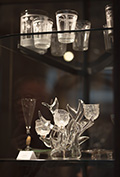
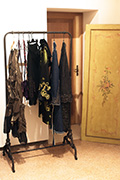
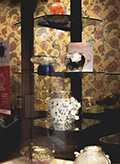
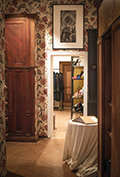
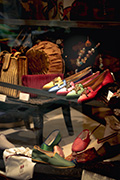

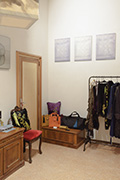
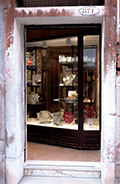
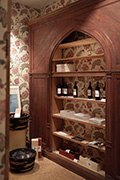
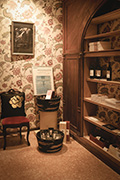

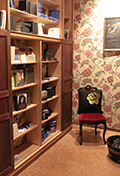
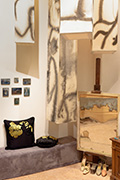

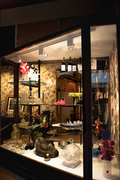













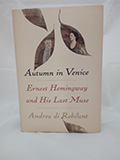
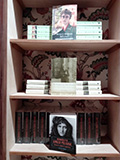
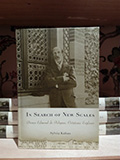


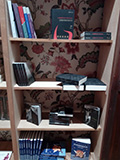
.jpg)
.jpg)

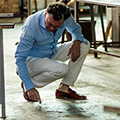

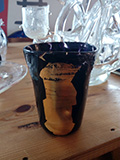


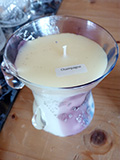
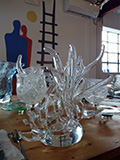

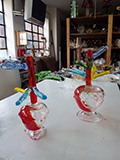
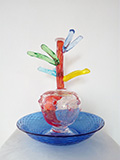

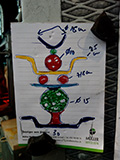
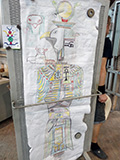
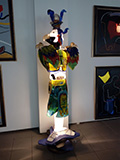
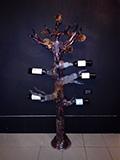
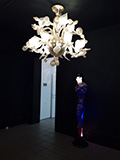
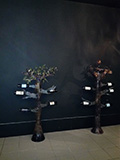
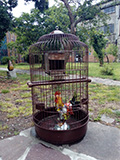
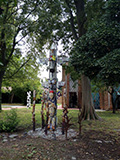
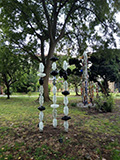

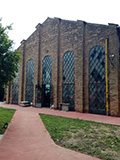










.jpg)
.jpg)
.jpg)
.jpg)
.jpg)
.jpg)
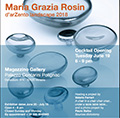
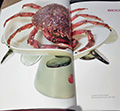

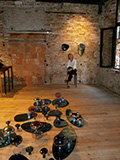
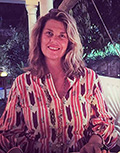
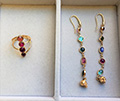





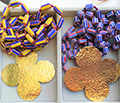
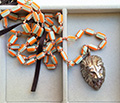
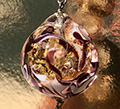
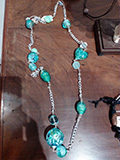
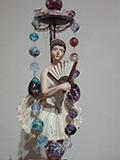

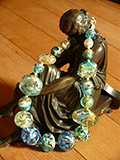
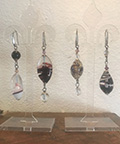
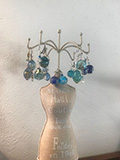
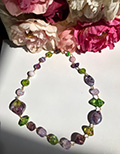
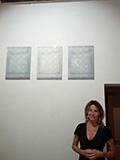
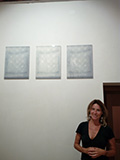
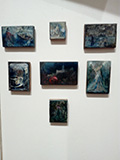
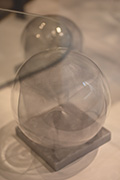
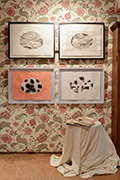
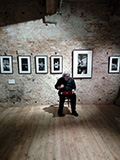



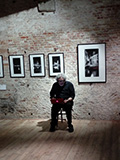

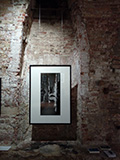





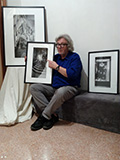
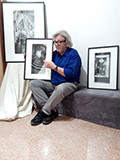


.jpg)








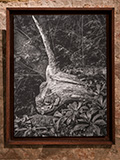

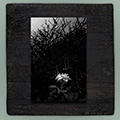

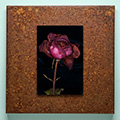
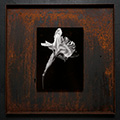
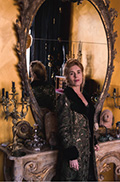

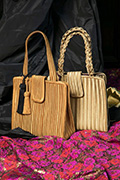

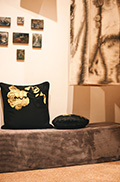
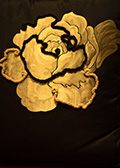
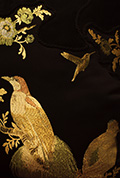
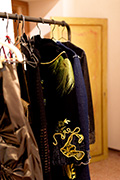
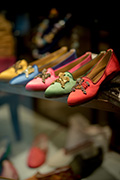

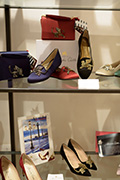
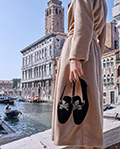
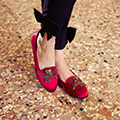
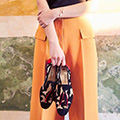
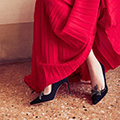

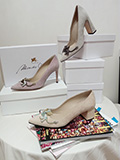
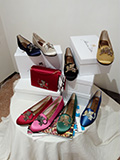
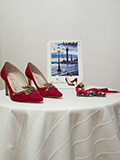


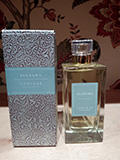
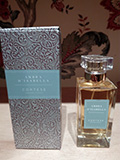

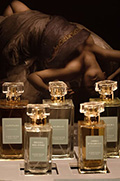
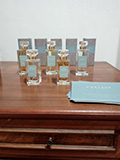


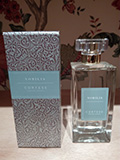
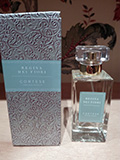

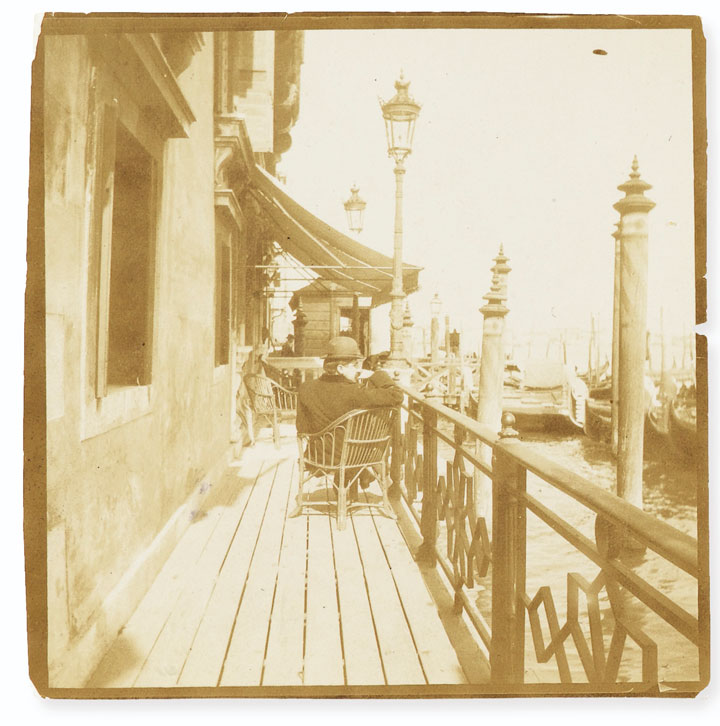
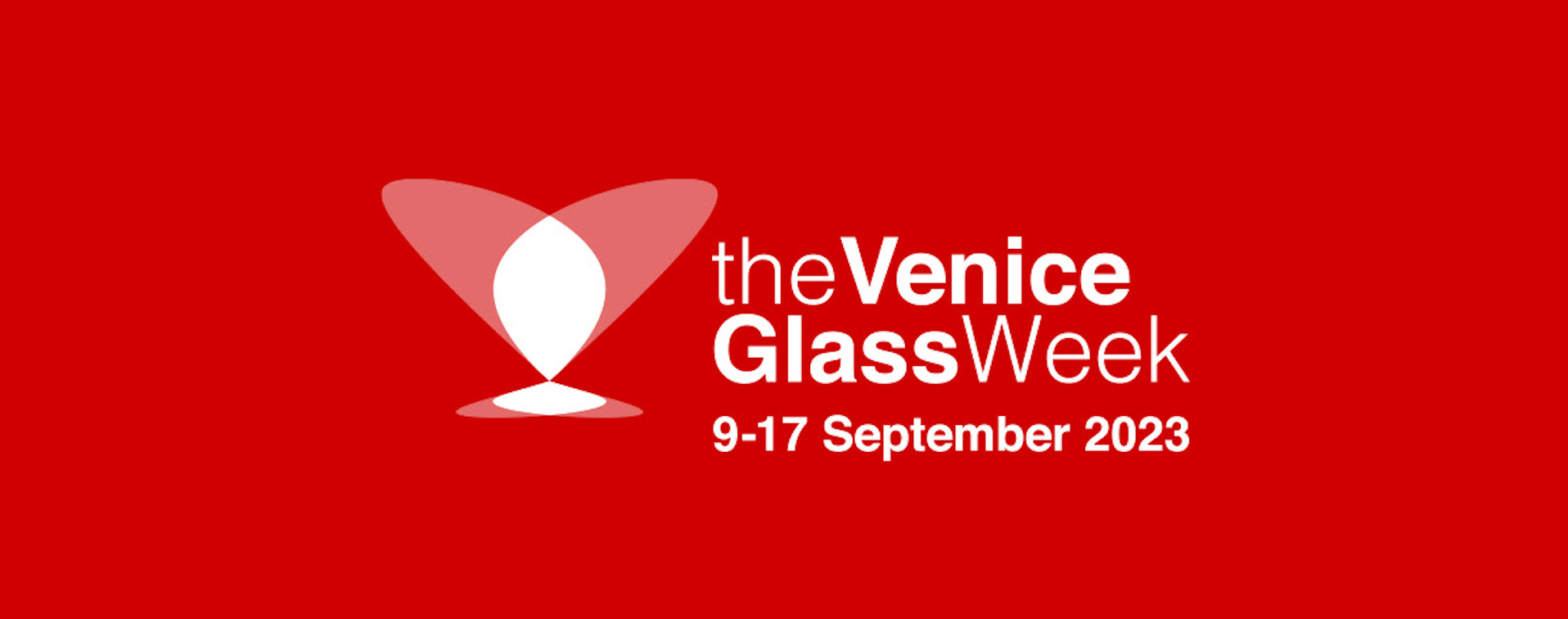




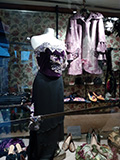
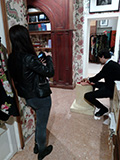
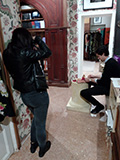
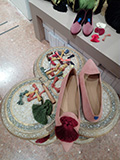

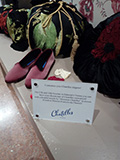
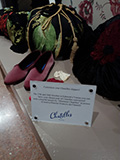
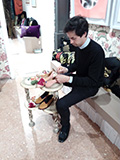
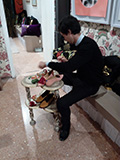
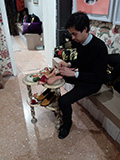

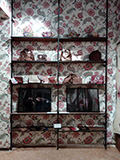
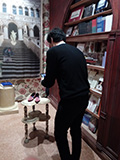
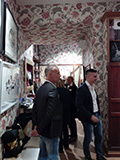
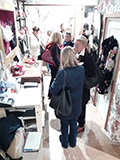
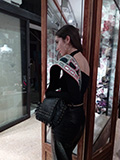
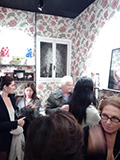
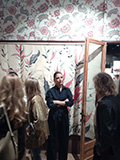
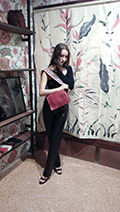
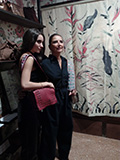
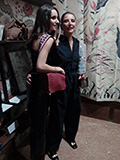
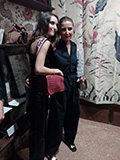

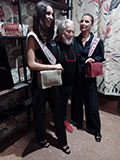
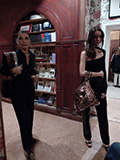
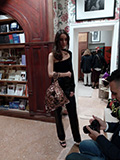
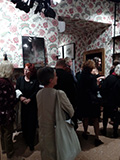
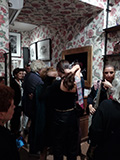
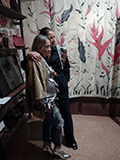
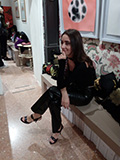
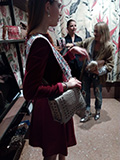
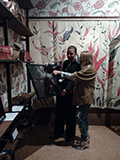
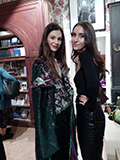
.jpg)
.jpg)
.jpg)
.jpg)
.jpg)
.jpg)
.jpg)
.jpg)
.jpg)
.jpg)
.jpg)
.jpg)
.jpg)
.jpg)
.jpg)
.jpg)
.jpg)
.jpg)
.jpg)
.jpg)
.jpg)
.jpg)
.jpg)
.jpg)
.jpg)
.jpg)
.jpg)
.jpg)
.jpg)
.jpg)
.jpg)
.jpg)
.jpg)
.jpg)
.jpg)
.jpg,
<div class=)
.jpg)
.jpg)
.jpg)
.jpg)
.jpg)
.jpg)
